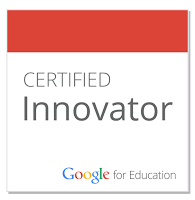I’ve been using Rewordify with my students for the past 4 years in my job as a high school resource room teacher. I try and use tech tools that can help level the playing field for challenged learners. It is overwhelming when I am trying to differentiate reading material because there are just so many words that I have to address in each passage.
I found rewordify at rewordify.com . It is FREE! It is available to all my students. It is easy to use for them and easy for them to bookmark and use independently! It is a tech tool that once it has been introduced to a student, it is one thing they remember to ask for and use.
Basically, Rewordify takes a passage, an article, a webpage or a book and can sift through the vocabulary and whiz-bang produce a passage with understandable vocabulary with the same meaning.
Here is a passage I entered into the home page from a NOAA website.
Rewordified:
An river is the thin zone along a (land next to a body of water) (such as bays, lagoons, sounds orsheds (skin, etc.)) where freshwater systems and rivers meet, and mix with a salty ocean,becoming partly salty.
Sometimes, freshwater from rivers mixes with large freshwater bodies creating a "freshwaterriver" that functions like a typical partly salty rivers.
The five major types of rivers are coastal plain, bar-built, delta system, (related to Earth's surface plate movement), and fjords.
Rivers are (like nothing else in the world) places that are valuable to (the health of the Earth/the surrounding conditions) and to (community of people/all good people in the world).
Original passage:
An estuary is the thin zone along a coastline (such as bays, lagoons, sounds or sloughs) where freshwater systems and rivers meet, and mix with a salty ocean, becoming brackish.
Sometimes, freshwater from rivers mixes with large freshwater bodies creating a "freshwater estuary" that functions like a typical brackish estuaries.
The five major types of estuaries are coastal plain, bar-built, delta system, tectonic, and fjords.
Estuaries are unique places that are valuable to the environment and to society.
But that is not all! There are features that extend the learning beyond the passage!
I can get a read out of the statistics about words per sentence, letters per word, and much more.This image shows some of the great features. My favorites are the rewordified text, Cloze activity and the answer key! Use this link for a larger clearer image.
This next image is a shout out to my ELL friends and speech and language therapists! The color coded passage with all the parts of speech is such a bonus! Larger image.
You are probably wondering who made this site and who supports it. I didn't have to look far to find out about Neil M. Goldman. Here is the scoop! Thanks, Mr. Goldman, this is a treasure. I am glad you found a way to help challenged learners.
Biography from Amazon
Neil M. Goldman spent fifteen years as a cubicle-bound computer professional and decided that he wanted to do more meaningful work than sit in front of a screen and write for-next loops.
So, he said a hearty goodbye to his marginally competent managers and a warm hello to the learning-hungry students in a suburban high school English classroom.
That first year of teaching was the hardest, most rewarding year of his life, and he felt he had to write about it. His first nonfiction book, Never Too Old To Teach, chronicled the joys and frustrations of that first year as a teacher.
Electric Dawn, his first novel, explores a scenario that's been on his mind for many years: what would happen if someone made a miraculous discovery of a device that would change the way the world works? Would that person be embraced and celebrated, or surrounded and destroyed?
When he's not writing books and grading papers, Neil enjoys motorcycling, cooking, and travel.








